Eating Chinese food is one of the greatest culinary joys, but if you’re a diabetic or at significant risk of diabetes, there are many elements of classic Chinese foods that might not be safe for you. However, everyone should be able to enjoy the rich flavors and deep culture these foods possess, diabetic or otherwise.
With a few simple tips and alternatives, any diabetic can enjoy Chinese foods as frequently as they like with no risk to their health. Read on for the 15 best Chinese food options for diabetics to learn how you can enjoy these culinary wonders safely and to the fullest.
Use a White Rice Alternative
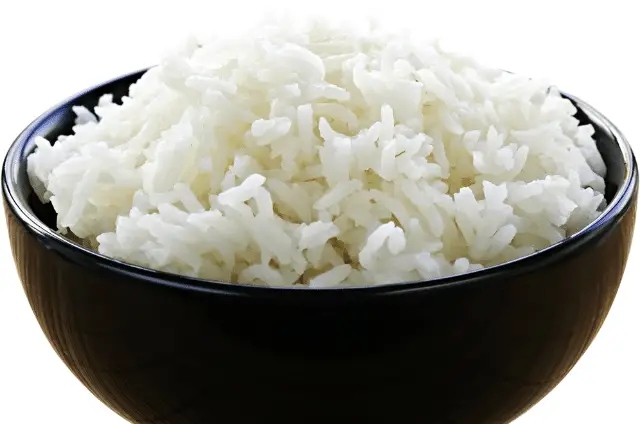
White rice is a staple of Chinese food. There are countless cuisines, such as stir-fries, that just isn’t complete unless they’re sitting on a fluffy hotbed of white rice.
Unfortunately, white rice can cause significant spikes in blood sugar, which is exceptionally dangerous for diabetics.
In a study conducted by Qi Sun and other researchers, it was discovered that each serving of white rice that an individual consumes daily increases their risk of developing type 2 diabetes by 11%. Quite the significant risk largely due to white rice having a high glycemic index (GI). Luckily, there is a safer alternative.
If you still want a nice bowl of rice to complete your Chinese cuisine, opt for brown rice and reduce your portion size. Brown rice possesses magnesium, which helps your body use insulin more efficiently and is lower on the GI scale, which is a more beneficial rice option over traditional white.
However, brown rice is typically higher in carbohydrates than white, so it is important to eat it in smaller portions. The optimal serving size for brown rice is about a cup. Visually, it shouldn’t look any larger than a scoop of ice cream.
If you find that your meal with this small serving of rice isn’t enough to satiate you, try supplementing it with high protein vegetables to help fill you faster.
Ask for Steamed Ginger Soy Fish Instead of Fried
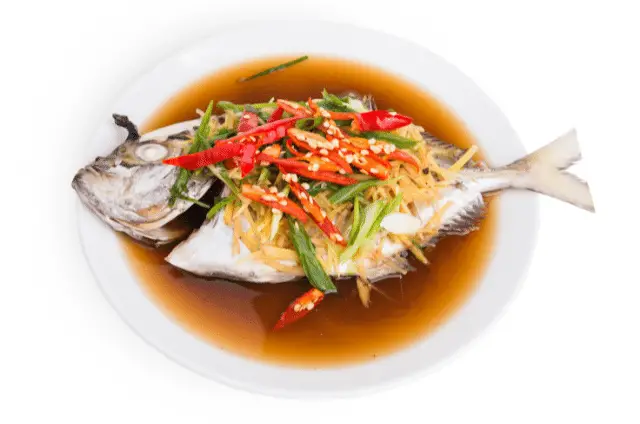
Ginger soy is a classic Chinese dish, but it is typically pan-fried, which increases saturated fats that are more dangerous to diabetics. Instead of frying your fish, steam it instead. You will still infuse all of the amazing flavors of this recipe and eradicate that fishy smell, but it will be much healthier in the long run.
Also, this dish is typically made with some white fish. Cod is a fantastic white fish that is high in Omega 3s, which has significant health benefits.
The healthful fats in fish can be particularly beneficial to diabetics. According to the ADA, a diet that is “high in polyunsaturated and monounsaturated fats can improve blood sugar control and blood lipids” in diabetic individuals.
Another positive of this dish is that the sauce for the fish only requires about two tablespoons of soy sauce, which isn’t as much as other Chinese dishes that have significantly high levels of sodium, often due to their affinity for incorporating high amounts of soy sauce.
For an added bonus, top your steamed ginger soy fish with a handful of scallions. These have extremely high antioxidant potential, and their sulfur levels have been proven to help prevent diabetes.
Get Creative with Sushi Rolls

Sushi is a highly popular Chinese dish that is great for a quick snack or an authentic and healthy meal. One of the potential dangers of sushi for diabetics is that they are always wrapped in a layer of rice, which, as previously mentioned, has a high GI index. Luckily, there are a few creative ways you can still enjoy a nice plate of sushi without worrying about how much rice you are consuming.
One option is to replace white rice with a bowl of cauliflower rice. This might sound like an odd choice when considering the construction of sushi, but cauliflower has become an increasingly popular rice alternative in the culinary world. Who knows, you might even discover you enjoy this alternative more than the original.
Another option is to completely eliminate the rice element altogether and simply wrap the sushi contents in just the outer seaweed layer, or you can stuff the content into a vegetable alternative, such as cucumber.
Ultimately, the healthful fats of the fish in sushi combined with any leafy greens it contains are exceptionally beneficial to diabetics and render this an optimal dish for their everyday diet as long as the rice content is eliminated or limited.
Start Your Meal with an Egg Drop Soup
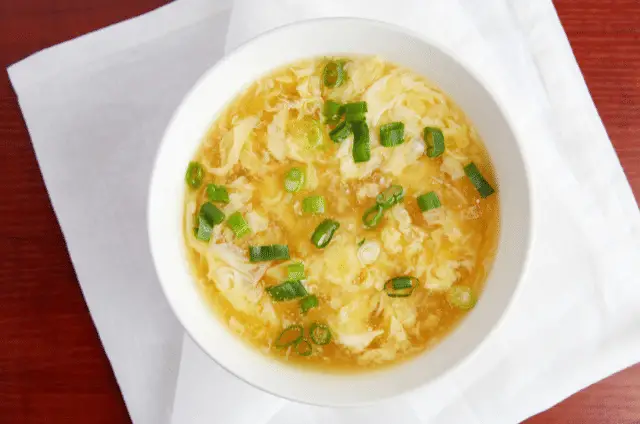
When people want a Chinese soup as a nice appetizer before their main entrees, they often go for a w0nton soup or hot and sour soup. Sadly, although these are flavorful and classic dishes, they are not the optimal choice for diabetics due to their incorporation of cornflour or cornstarch, which is high in calories and carbohydrates. Cornstarch is also easily digestible, leading to spikes in a diabetic’s blood sugar levels.
Fortunately, you can enjoy a nice egg drop soup instead. Soups with clear broths are typically a step in the right direction for diabetics. Egg drop soup is great because it is a relatively low-carb soup compared to wonton soup and typically uses half the amount of cornstarch found in hot and sour soup.
If you are really nervous about incorporating cornstarch or cornflour, you can make both egg drop soup and hot and sour soup without this ingredient, which would render them both sufficient appetizers for diabetics.
Without the ¼ cup of corn starch, hot and sour soup is actually a decent appetizer here because you can add beneficial vegetables, such as mushrooms, that egg drop soup doesn’t typically include.
The protein found in eggs is another reason why this particular appetizer is beneficial to diabetics. You typically whisk about three eggs and pour them into your boiling broth to create the egg’s ribbony texture. One large egg contains 6 grams of protein alone, and this is helpful to diabetics because it prevents their blood sugar from rising too high after eating.
Master the Moo Goo Gai Pan
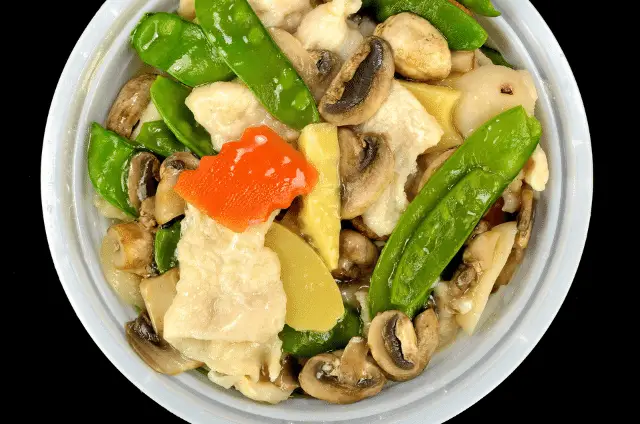
One of the best things a diabetic can do when eating Chinese foods is to choose a dish that is predominantly made with vegetables, especially leafy greens.
Moo goo gai pan is loaded with vegetables that are great for diabetics because not only will this meal fill you up, but the vegetables are also filled with minerals, nutrients, and essential vitamins and have very minimal impact on blood sugar levels.
A classic dish of moo goo gai pan will include:
- Mushrooms
- Carrots
- Peas
- Broccoli
- Green onions
- Bamboo shoots
- Bok choy
All of these vegetables have their own individual health benefits, but when you combine them into a dish with a lean protein, such as chicken or shrimp, then they create the ultimate Chinese dish for a diabetic. The more vegetables you incorporate, the faster you will feel full, and the less you will ultimately eat.
Switch out Sushi for Sashimi and Edamame
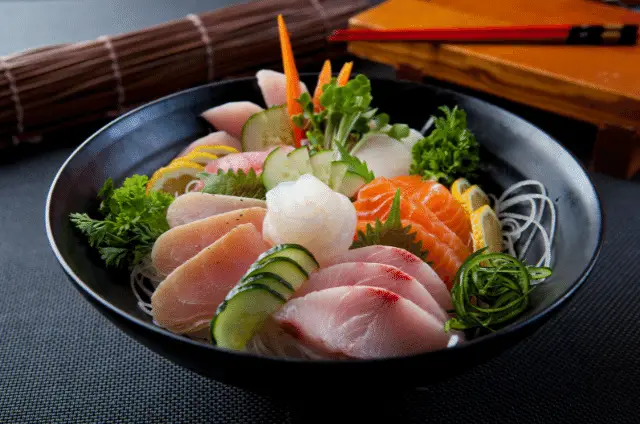
If the sushi experience just isn’t the same for you without that fluffy layer of rice in between your seaweed and fillers, then maybe you’ll want to switch to sashimi instead.
Sashimi allows you to still enjoy the raw, flavorful fish many individuals go to sushi for, but you can eat these beautiful cuts of fish without rice.
Salmon is a great fish to have prepared sashimi-style, particularly because it is one of the fatty fish with the highest levels of Omega 3’s, and it is also highly accessible. Pair your sashimi with ginger and hot sesame oil, and you’ll be in culinary heaven.
Now, suppose you’ve eaten all your sashimi and find that you are still hungry, or you want a more complete dish than just a serving a protein. In this case, don’t turn towards the rice. Instead, supplement your protein with a quality serving of edamame.
If you’re unfamiliar with edamame, it is a preparation of unripe soybeans still in their pod. Typically, these vegetables are served hot or cold after they are blanched in lightly salted water. For diabetics, there are multiple benefits of edamame.
One, they are full of protein, which means you will feel full and satiated with this alternative in a much quicker and healthier manner than you would with white rice.
Second, it has been proven through some studies that edamame can help lower blood sugar levels and potentially improve insulin resistance (Study 1, Study 2). It is important to note that these were animal studies, and future research is necessary to determine the full potential of edamame in humans.
Fortunately, its high levels of protein and nutrients alone render it a beneficial snack for diabetics regardless of the relatability of these studies.
Snack on a Fresh, Raw Spring Roll
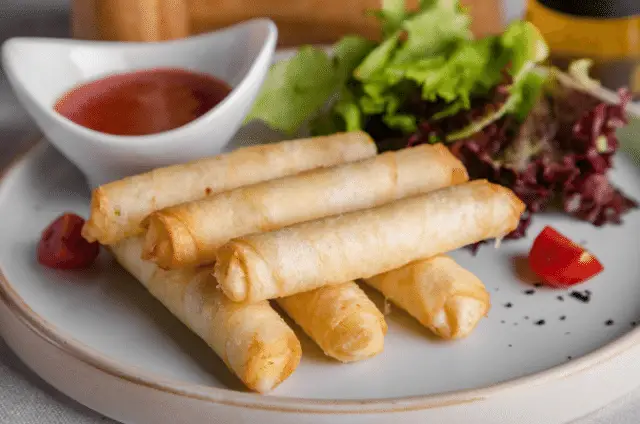
Egg rolls are the epitome of Americanized Chinese food and arguably the most popular Chinese dish Americans will order. When people glance at a Chinese menu, they are far more likely to choose a side of egg rolls over fresh spring rolls.
Although that crispy, crackly exterior is absolutely to-die-for, the deep-frying process necessary to achieve the egg roll’s staple golden crust entails that each one has about 220 calories and 10 grams of fat. These numbers aren’t healthy for any individual, let alone diabetics.
It might be hard at first to let go of these fatty but satisfying side dishes. We guarantee you can be just as happy and insurmountably healthier by turning towards fresh, raw spring rolls instead. Depending on its contents, one spring roll will have around 70-138 calories and 1.5-2 grams of fat. This is a vast improvement in the numbers of the classic deep-fried egg roll.
Spring rolls are wrapped in thin flour or rice wrappers and then filled with an assortment of vegetables, including:
- Carrots
- Mushrooms
- Napa cabbage
- Bamboo shoots
Many individuals will add a meat protein, typically pork or shrimp, for a more filling or savory roll. We previously discussed the benefits of incorporating vegetables in meals for diabetics in our moo goo gai pan listing, and this still applies here.
However, those vegetables are typically cooked in a stir-fry style for that dish. For the healthiest option, refrain from cooking your spring roll vegetables so they don’t lose nutrients.
If you find that this food option is all crunch and lacks a depth of flavor, you can pair it with one of three classic dipping sauces. Personally, we recommend a peanut dipping sauce, but other enjoyable options are a Vietnamese fish dipping sauce, referred to as nuoc cham, or you can use a simple Hoisin sauce.
Some people will still choose to deep fry their spring rolls because they just can’t live without that crackly crust. We strongly suggest you refrain from this step. Fresh, raw spring rolls are by far the best choice. However, if you truly want that crisp wrapper, you can brush them with a light layer of oil and bake them.
Shirataki Lo Mein
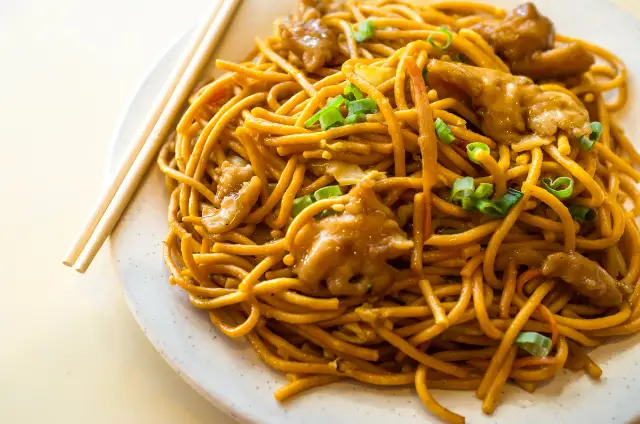
This alternative might be difficult to find in Chinese restaurants because shirataki noodles are an amazing culinary invention from Japan. If it is available, ask them if they can make their staple lo mein dish using these noodles instead.
The lo mein noodles used for this dish is where the danger lies for diabetics. Similar to chow mein, lo mein noodles are high in carbohydrates, a food risk for diabetics because the body digests these carbohydrates into glucose, which causes an increase in blood sugar levels.
Alternatively, shirataki noodles are high in the fiber glucomannan, which is a type of viscous fiber that can help you feel full faster with a much smaller portion. Therefore, by eating these noodles, you consume fewer carbohydrates and smaller portions while still gaining the benefit of eating a classic Chinese dish that typically incorporates heavy amounts of vegetables and lean proteins.
Additionally, this alternative has significantly fewer calories and digestible carbs than its original version. A 3.5-ounce (100-gram) serving of shirataki noodles contains 3 grams of digestible carbohydrates, whereas a 4 oz serving of lo mein has 10.9 grams of net or digestible carbs. The calorie count for shirataki noodles of the same serving size is ten calories per serving versus lo mein’s 112.4 calories per serving.
Another benefit of shirataki noodles is that studies have proven it effectively reduces blood sugar levels after consumption and reduce risk factors that cause heart disease in diabetics (Study 1, Study 2).
Fill Up on Chicken and Steamed Broccoli

Traditionally, this dish is served as beef and broccoli. Still, considering the staggering amount of saturated fats that can be found in steak and other forms of beef, chicken is the safer alternative here. This is especially important for individuals who have type 2 diabetes because they are four times more likely to die of heart disease than the average individual with normal blood sugar.
Therefore, the best way to enjoy this Chinese dish is with chicken. In terms of high protein meats, chicken is one of the best options, and nearly all chicken cuts are low-fat.
High protein meat will help you feel satiated quickly and does not rank on the GI index. This means, since this dish is so simple, it is highly unlikely that it will raise your blood sugar levels more than a minimal amount.
The other key component in this dish is the broccoli. This green vegetable is one of the most nutritious options you could find. They are extremely low in calories and carbs and contain vitamin C and magnesium, a mineral previously discussed that assists your body in using insulin efficiently.
Other benefits of broccoli for diabetics include:
- Lowering insulin levels and protecting against cellular damage
- Management of blood sugar levels
- 10 percent reduction in blood glucose
- Good source of lutein and zeaxanthin that can help prevent eye diseases
Clearly, the advantages of eating broccoli are significant, but why the emphasis on steaming them? Some vegetables lose a great deal of their nutritional value after cooking them, such as cauliflower. Others increase in nutritional value after being cooked, as is the case with spinach. Broccoli, however, lies a little in-between.
To obtain the peak of nutritional value from broccoli, studies have shown that you should lightly steam them (Study 1, Study 2). This allows you to reap all of the benefits this popular vegetable has to offer, such as potent antioxidants, high amounts of protein, and aiding blood sugar control.
Don’t Candy Your Kung Pao Chicken
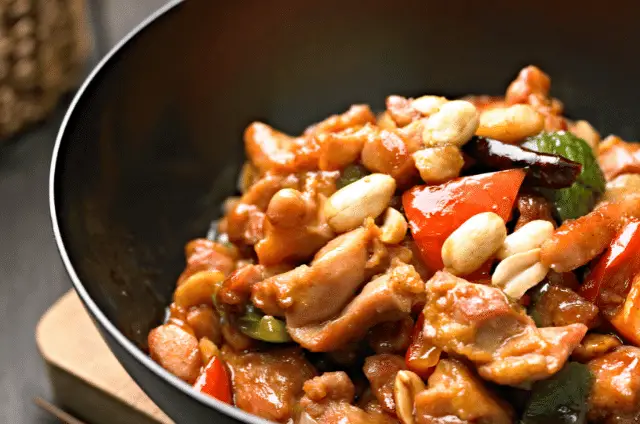
One of the biggest issues with Chinese foods for diabetics is that many popular Americanized dishes are coated in sugary sauces that aren’t safe for a diabetic to eat. However, this doesn’t mean you have to miss out on these dishes entirely; just be conscious of your sugar levels.
Some dishes, such as Orange Chicken, have so much sugar your teeth are practically coated with it, and the dish ultimately tastes like candy. Kung Pao Chicken is filled with many good components for diabetics, mainly chicken, peanuts, and bell peppers. If you make it right, it can have minimal levels of sugar but retain maximum flavor.
We’ve discussed the benefits of chicken in our previous listing, but this star protein isn’t the only benefit of eating kung pao chicken. Peanuts are a staple ingredient of this dish and great for diabetics because they are a very low-GI scoring food with a GI score of just 14 and a GL of 1.
Another common and valuable ingredient is bell peppers. In raw form, these peppers contain about six carbs per cup. However, according to the American Diabetes Association, bell peppers are considered a nonstarchy vegetable, and so, the majority of their carbohydrates are found in the form of fiber.
This is advantageous because fiber can help regulate blood sugar levels and reduce the risk of heart disease.
A healthier Kung Pao Chicken recipe for diabetics we recommend can be found here. There are no added sugars for the sauce, and it only requires two teaspoons of cornstarch for the chicken, which you can eliminate and simply pan sear your protein instead.
Treat Your Sweet Tooth with a Steamed Asian Pear with Honey
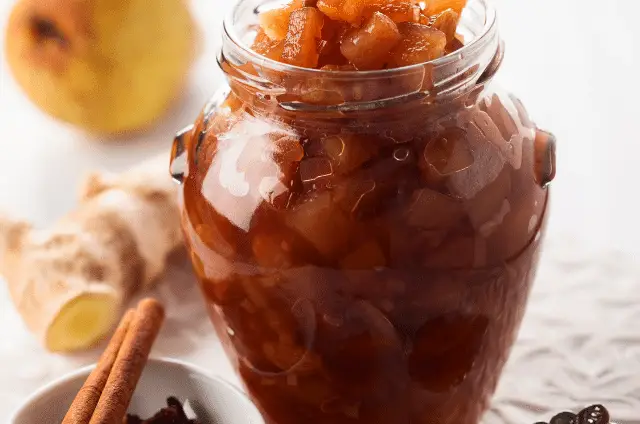
Due to the significant sugar and cholesterol levels found in most desserts, it can be difficult for a diabetic to find a Chinese dessert when they go out to eat.
Fruit is always an exceptional option for any dessert or side dish. If it’s available, ask for a fruit salad to supplement or complete your meal. However, if you’re looking for something a little more decadent, steamed Asian pears with honey will definitely satisfy your sweet tooth and be the metaphoric cherry on top of your Chinese meal.
Unlike most fruit desserts that add cups worth of sugar to really sweeten the deal, there are only four ingredients necessary to make steamed Asian pears, and they are all low-risk for diabetics.
Pears themselves have a low glycemic index, and since they are the stars of this show, it is highly unlikely that this dessert will raise a diabetic’s blood glucose too quickly. The other three ingredients include fresh lemon juice, honey, and your choice of a filler topping. This might be apricots kernels or Chinese almonds.
Although the effects of honey are relatively the same for a diabetic as sugar, the advantage of using it for this recipe is that it only requires around four tablespoons versus other deserts that use ½ a cup of sugar or more. Alternatively, you could opt for an artificial sweetener that is proven not to affect blood sugar levels.
Savor Your Steamed Dumplings
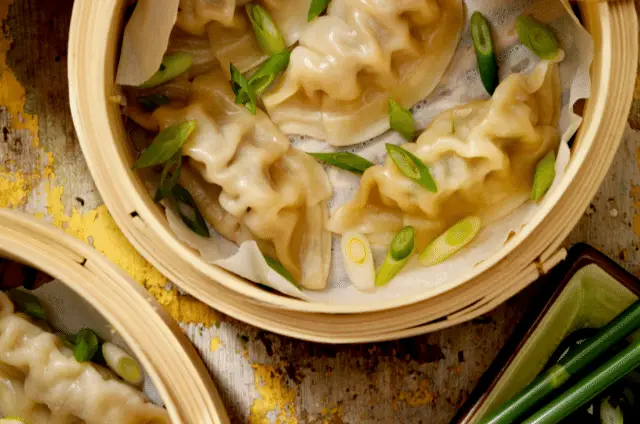
Dumplings are another Chinese food favorite. I’m sure many diabetics are wondering how risky it is for them to indulge in a bowl of these beautifully crafted purses of flavor. The answer is, it depends on how they are prepared and how many you have.
Moderation is extremely important with any food, but since diabetics have to be extra conscious of what they’re eating, it makes the process of eating the right foods that much harder. The good news is, you don’t have to give up this Chinese classic. Dumplings are typically filled with a lean protein and various vegetables such as bok choy, scallions, and mushrooms.
In terms of protein, the classic choice is pork. Although pork isn’t necessarily the best option for diabetics, if you are passionate about using it, be sure it as lean as you can get. Alternatively, we suggest you have a seafood dumpling filled with shrimp, or you can use chicken instead.
Another important distinction of this dish is that you should have steamed dumplings rather than pan-fried dumplings, often referred to as potstickers. If you are making dumplings at home and don’t have a bamboo steamer, you could also boil them for the same result.
Lastly, we need to return to the point of moderation. Dumplings can be relatively high in carbohydrates, largely due to their dough. A serving of two dumplings can have between 12-22 grams of carbohydrates. Therefore, we suggest that, if you choose as a diabetic to have this dish, you limit yourself to maybe four dumplings and supplement your meal with some high protein vegetables to help fill you up.
If You Absolutely Need General Tso, Use Tofu
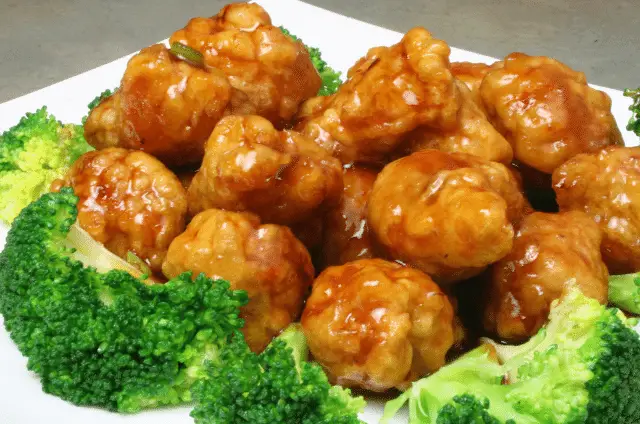
If the spicy, sweet flavors of General Tso’s Chicken are really at the forefront of your mind, try this recipe where you can substitute the chicken for tofu. You can also substitute the brown sugar for an artificial sweetener to make the dish more diabetic-friendly.
It has been proven that tofu is one of the best proteins for a diabetic to eat, thanks to the fact that it is considered a complete protein and can help regulate blood sugar levels. One ½ cup serving of tofu has 10 grams of protein alone. This rivals any meat protein you could choose but is more beneficial due to its regulatory properties.
Another positive of eating tofu is that it is high in dietary fiber. This, combined with its significant amounts of protein, means that you are likely to eat a much smaller serving of this dish than its chicken alternative because it will fill and satiate you faster.
The chicken version of this meal also tends to have much higher carbohydrates, capping at 128 grams versus the tofu version that essentially halves that at 62 grams.
The biggest danger with General Tso is its irresistible sauce that can have extremely high levels of sugar. By mitigating this in your recipe or replacing it with an artificial sweetener, you are far more likely to have a fulfilling experience at a significantly reduced risk.
Another element to be aware of is that this dish, tofu, or other, requires you to pan-fry your protein source. Since you are making so many healthy alterations by using tofu and artificial sweeteners, we’d like to think you can live a little with some pan-frying, but again, be conscious of this risk.
